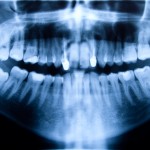
Dry socket (alveolar osteitis) socket is a painful complication of tooth extraction that occurs in about 5% of extractions of permanent tooth. It is more common following the extraction of wisdom teeth. That aim of this review was to assess whether chlorhexidine, when compared to placebo and/or other interventions, reduced the incidence of alveolar osteitis (AO ) in patients who had tooth extraction.
What did they do
The databases, BBO (Bibliografia Brasileira de Odontologia), Biomed Central, Cochrane Library, Directory of Open Access Journals, LILACS (Literatura Latino-Americana e do Caribe em Cien- cias da Saude), Open-J-Gate, OpenSIGLE, PubMed, Sabinet, Science-Direct were searched. References of accepted articles and reviews were also Prospective studies with 2 or more arms were included. Study quality was assesses independently. The primary outcome measure was the incidence of AO reported at the patient level.
What did they find
- Ten randomised controlled trials were included, from these, 16 dichotomous datasets were extracted.
- Two of six application protocols favoured chlorhexidine over placebo:
- Single application of 0.2% chlorhexidine gel placed in the socket immediately after extraction versus placebo gel (RR 0.40; 95% CI: 0.18–0.90; p = 0.03) and
- 0.12% chlorhexidine rinse applied on day of surgery and used twice daily for 7 days postoperatively versus placebo rinse (RR 0.50; 95% CI: 0.27–0.93; p = 0.03).
- The evidence for both protocols is weak and may be challenged on the grounds of high risk of selection, detection/performance and attrition bias.
- Chlorhexidine did not cause higher adverse reactions than placebo.
The authors concluded
…. within the limitations of this review, only two of six identified application protocols were found to significantly decrease the incidence of AO. The evidence for both protocols is weak and may be challenged on the grounds of high risk of selection, detection/performance and attrition bias. Chlorhexidine seems not to cause any significantly higher adverse reactions than placebo. Future high-quality randomised control trials are needed, to provide conclusive evidence on this topic.
Comment
There have been previous systematic reviews of this question as noted by the authors (see links) and a Cochrane Systematic review of interventions for the prevention of dry socket is also underway. It will be interesting to compare the outcome of the Cochrane Review with the approach taken for this review in due course.
Links
Yengopal V, Mickenautsch S. Chlorhexidine for the prevention of alveolar osteitis. Int J Oral Maxillofac Surg. 2012 May 21. [Epub ahead of print] PubMed PMID: 22622144.
Daly B, Newton T, Nasser M, Jones K, Fedorowicz Z. Intrasocket interventions for the treatment of dry socket (Protocol). Cochrane Database of Systematic Reviews 2008, Issue 1. Art. No.: CD006968. DOI: 10.1002/14651858.CD006968.
Minguez-Serra MP, Salort-Llorca C, Silvestre-Donat FJ. Chlorhexidine in the prevention of dry socket: effectiveness of different dosage forms and regimens. Med Oral Patol Oral Cir Bucal. 2009 Sep 1;14(9):e445-9. PubMed PMID: 19718007.
Hedstrom L, Sjogren P. Effect estimates and methodological quality of randomized controlled trials about prevention of alveolar osteitis following tooth extraction: a systematic review. Oral Surgery, Oral Medicine, Oral Pathology, Oral Radiology, and Endodontology.2007;103(1):8‐15 CRD Summary PubMed Abstract
Caso A, Hung L K, Beirne O R. Prevention of alveolar osteitis with chlorhexidine: a meta‐analytic review. Oral Surgery, Oral Medicine, Oral Pathology, Oral Radiology, and Endodontics.2005;99(2):155‐159. CRD Summary PubMed Abstract

[…] The Dental Elf Jun 29th 2012 […]
[…] Some limited evidence to support the use of chlorhexidine to prevent dry socket […]